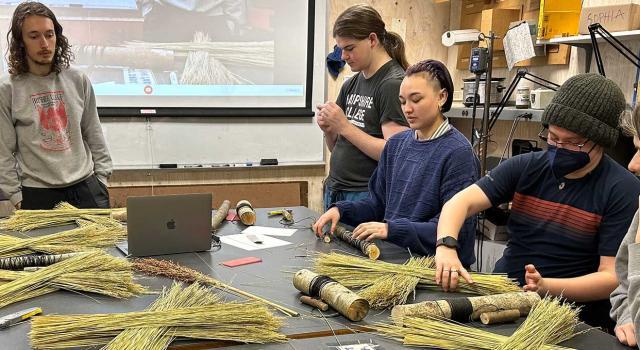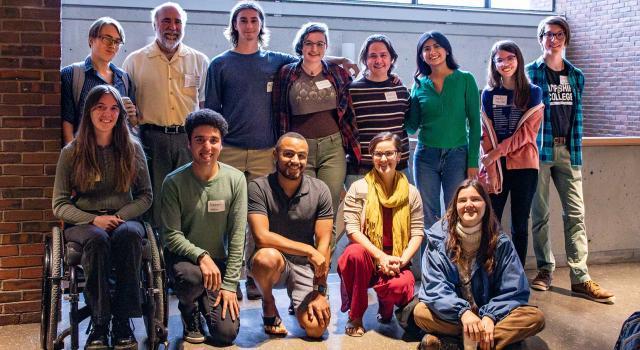National Lab Hosts Campus Study of Bird Impact from Solar Panels, Offering Unique Opportunity for Hampshire Students

Argonne National Laboratory, a science and engineering research center working on affordable clean energy and environmental protection programs, partnered with Hampshire for research on the interactions between birds and solar panels.
Funded by the Department of Energy, Argonne and Hampshire College are conducting a collaborative avian PV solar–monitoring project to explore the interactions of birds with these energy facilities. Hampshire, which has two large solar fields on campus, which generate more than 4 million kWh of renewable energy, is one of six sites across the country partnering with Argonne.
Fieldwork includes systematic searching for bird carcasses in the solar fields and use of audio and video devices to record bird and wildlife interactions. A new AI-sensing technology is being tested to continuously monitor bird activity in the hope of being able to identify how birds may be negatively impacted by solar panels and how they may benefit from the ecosystems provided by the solar fields.
Student research assistants work under the supervision of a field researcher from Argonne. The researcher comes out once a week, on Tuesday, and works with students to survey both solar fields. Students walk between the rows of solar panels, look for bird carcasses, and record their species and location. Hampshire students also participate in fieldwork by aiding in photography and minor camera maintenance.
The field researcher provides training and mentorship, and students have the opportunity to contribute to the final report. They are paid for this work, and one student is also using it to fulfill their Community-Engaged Learning 2 requirement and another is using the video footage to support an independent study.
Few studies of its kind have been undertaken outside of the southwestern United States, so data are slim and outcomes unclear. “Understanding the nature and magnitude of avian mortality, for example, is crucial in determining the net effects of these facilities on bird populations,” writes Argonne. “Furthermore, there is growing information suggesting that properly sited and managed facilities could offer benefits to bird populations by providing habitat for foraging, nesting, and roosting, thereby offsetting some or all of the mortality risks.”
As PV solar energy development is taking place at an accelerated rate to achieve the nation’s clean energy goals, understanding the positive and negative effects on bird populations is urgent.







